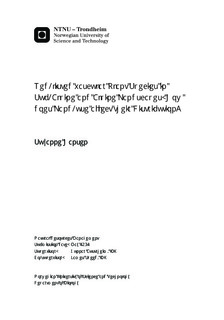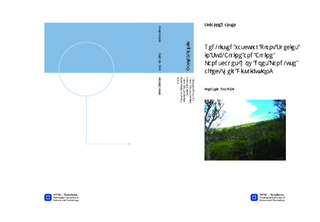| dc.description.abstract | A major threat to red-listed vascular plant species in semi-natural habitats is land use change. In this study the effect of land use on the distribution of red-listed vascular plant species was investigated in a protected upland area: Budalen Landscape Conservation Area in mid-Norway (c. 600-900 m a.s.l.). The selected species were Gymnadenia conopsea(Near threatened, NT), Gentianella campestris (NT), Primula scandinavica (NT), Botrychium lunaria (NT) and Dactylorhiza incarnata (NT). It is expected that low intensity land use benefit red-listed species in these semi-natural habitats and thus that land use variables such as former haymaking, woodcutting and distance to summer farms will affect the overall distribution of the species in the landscape. Also, land use (or rather abandonment of such) is expected to have an indirect effect on distribution by encroachment of birch (Betula pubescens). The area was examined by placing 27 transects on the southwest facing slope of the valley (from ca. 600-1200 m a.sl). Along the transects, birch and every detected red-listed species population were sampled. Birch height and stem diameter were recorded to quantify encroachment, and the population size and structure of the red listed species was recorded. Land use, altitude and vegetation data were extracted from ArcGIS to relate to the distribution of red-listed species. In this study it was found that when modelling distribution with red-listed species as a group, altitude, distance to nearest summer farm and former haymaking came out as the most important explanatory variables. Because of low abundance of the other species, only Gentianella campestris and Gymnadenia conopsea could be modelled separately. For Gymnadenia conopsea altitude, haymaking and vegetation type had significant effects on the distribution. The distribution of Gentianella campestris was significantly affected by altitude, distance to nearest summer farm and vegetation type. A population estimate of the species indicated that G. conopsea (15 157 individuals) and G. campestris (35 384 individuals) are abundant in the birch meadow grassland. There was also a high degree of birch recruitment regardless of altitude, and the proportion of recruits (birch < 20 years of age) in the local population was negatively correlated with the presence of red-listed species. All red-listed species in this study had land use variables as significant factors explaining their distribution. This indicates that changes in land use are very important in determining the distribution of red-listed species connected to semi-natural landscapes. | nb_NO |

